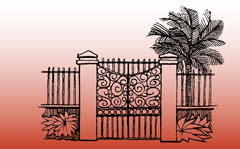Abstract
In the realm of scholarly research and publishing in the humanities, much interest and activity has focused on the impact of digital technology on the academic monograph, and on the application of this technology to archival collections. In terms of the former, this paper addresses the discourse of the “future of the monograph,” focusing on statements made about the digital monograph assuming new online forms. In terms of the latter, this paper comments on primary source databases. Whereas the “future of the monograph” has been approached mainly as a question of form, the matter of primary source databases has been driven by issues of content with little attention paid to the impact of the digitized format on researchers. Yet, as uniform technical objects embedded in the shared space of the Web, the digital monograph and digitized primary sources should be viewed together. Doing so will allow us to see the features—and perhaps the futures—of both more clearly, and to make better assessments of the collections supporting digital scholarship in the humanities.
Included in
Collection Development and Management Commons, History Commons, Scholarly Publishing Commons
The Digital Monograph and Primary Source Databases: Agenda Toward a Unified Conversation
In the realm of scholarly research and publishing in the humanities, much interest and activity has focused on the impact of digital technology on the academic monograph, and on the application of this technology to archival collections. In terms of the former, this paper addresses the discourse of the “future of the monograph,” focusing on statements made about the digital monograph assuming new online forms. In terms of the latter, this paper comments on primary source databases. Whereas the “future of the monograph” has been approached mainly as a question of form, the matter of primary source databases has been driven by issues of content with little attention paid to the impact of the digitized format on researchers. Yet, as uniform technical objects embedded in the shared space of the Web, the digital monograph and digitized primary sources should be viewed together. Doing so will allow us to see the features—and perhaps the futures—of both more clearly, and to make better assessments of the collections supporting digital scholarship in the humanities.
